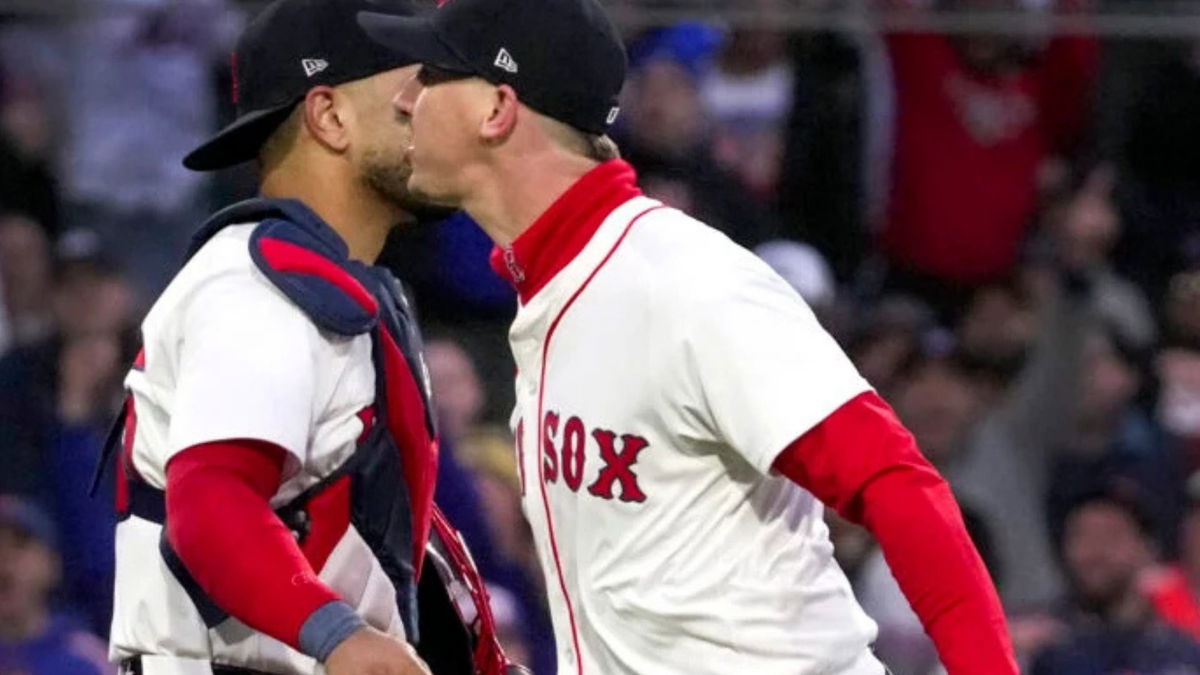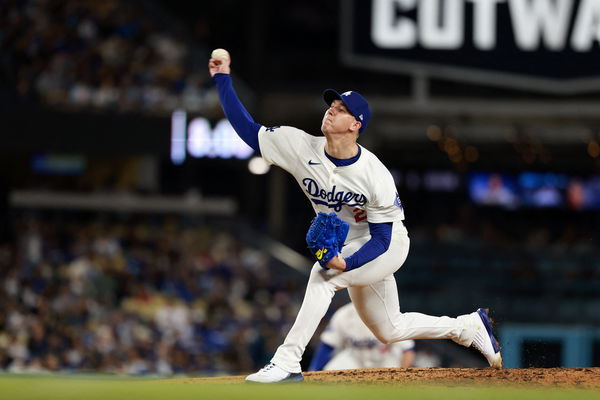
Imago
Credit: boston.com

Imago
Credit: boston.com
The night felt electrifying. Packed house, under the lights, the energy throbbing through the stadium like a live wire. One of those games where you just knew something dramatic was approaching, you just did not know from where. The pitcher on the mound was not just casting warmups; he was making a statement. This was a return, a redemption, maybe even a reminder.
Watch What’s Trending Now!
But in baseball, moments flip swiftly. One second you are scaling toward glory, the next, tempers boil and the spotlight burns too bright. That is when the game changed, not because of a hit, but a heated exchange that revolved the diamond into a battleground.
It started with a called ball. Nothing new. Nothing special. Until it was. The Red Sox ace, Walker Buehler, fresh off a stretch on the injured list, was on limited innings and high emotion. Walker Buehler was facing a tough Mets lineup and after a close call at the plate during Juan Soto’s at-bat, frustration simmered to the surface. A few words, a gesture, maybe just a look, and boom: he was tossed. Ejected. Just like that.
ADVERTISEMENT
The umpire? Mike Estabrook. And he did not concede. Instead of allowing the moment to cool, Estabrook stepped out, pulled off his mask like it was Broadway and made sure all eyes were on him. As per former big leaguer Todd Frazier, “Estabrook, as an umpire, wants to be shown on TV like usual. Just let him get his voice out there… He went forward to make sure he was seen so he could bark back at him.”
That is when the real controversy began.
From the outside, it could have looked like just another ump-player tussle, but inside the baseball colony, the fallout was real. Erik Kratz, former catcher and analyst, did not stop and said: “Major League Baseball won’t have the spine to stand behind the player,” he said bluntly on Foul Territory TV. For Kratz, it was not about defending every outburst, it was about fairness. Because if talent gets punished for leaving their spot to argue, why are umpires authorized to do the same without repercussions?
ADVERTISEMENT
Frazier rolled that frustration, pointing out that the pitcher had “every right to say something,” specifically, when the calls were consistently off. He even added, “You missed the calls right down the darn plate. Like, come on, man.” It was not just the ejection, it was the double standard that treated veterans the wrong way.
Kratz drove the point home: “If you leave your position to argue a call, you’re ejected. Why is an umpire not being held responsible for leaving his position?” He was not upholding poor behavior, he was demanding consistency. The player cursed, yes, but he did not invade the ump directly. It was Estabrook who accelerated it.
ADVERTISEMENT
“Major League Baseball won’t have the spine to stand behind the player.”@ErikKratz31 and @FlavaFraz21 shed light on home plate umpire Mike Estabrook for escalating the situation with Walker Buehler last night. pic.twitter.com/ggGn3oGdyl
— Foul Territory (@FoulTerritoryTV) May 21, 2025
And that is the main reason for this controversy. It was not just a bad night for Walker Buehler, it was another instance of a league too willing to let its umpires play by a different rulebook. Athletes wear their emotions on their sleeves. Umpires are assumed to have control. When that equilibrium flips, chaos takes over, and players are left cast aside, with no one in the league office marching in to defend them.
Because, as Kratz said, plain and simple, “MLB would not have the spine to stand behind the player”.
ADVERTISEMENT
Buehler’s Whiskey-fueled tweet adds another flame
If things exploded on the field, they straight-up combusted online. Coming off the mental rollercoaster of the ejection, Walker Buehler did not take the quiet, media-trained route most stars choose. Instead, the Red Sox star logged into X, likely still simmering and, as the star later confessed, with a little help from whiskey. What came after was not damage control. It was another fastball targeting Mets shortstop Francisco Lindor. Buehler hit hard on X and said: “I would not want me out there either. The sad thing is the BULLPEN is full of f– king animals. Tough choice.”
This was the conflict that moved from behind home plate to the online arena.
ADVERTISEMENT
It was Lindor’s reaction that lit the spark, a visible celebration of the ejection that did not sit right with the Red Sox pitcher. While Buehler said that the alcohol played a part, the state did not fully walk it back. In fact, when crew chief Laz Diaz backed Estabrook, saying Buehler was tossed for leaving his place, Buehler countered online with a sharp reply. He said, “Who cut the distance?” The implication? The umpire did the approaching, not him.
Top Stories
Blue Jays’ Embarrass NY Teams After Stealing $37M Mets Star as Kyle Tucker Deal Appears Inevitable

Blue Jays Make Massive Offseason Powerplay While Bo Bichette & Kyle Tucker Remain Unsigned

Blue Jays to Show Exit Door to 3 Playoff Stars as Ross Atkins Plans Major Changes: MLB Winter Meeting Rumors

Blue Jays’ Kyle Tucker–Bo Bichette Push Turns Toronto’s Mockery Into AL East Nightmare as Yankees Face New Threat

Mets Told to Move on From Cody Bellinger Pursuit for $180M Free Agent Slugger

It was another chapter in a night that just would not settle. “I said my piece — sponsored by Buffalo Trace a little bit,” the star later said to MassLive, mixing sarcasm with sincerity. However, as the Red Sox star cooled off a day later, telling reporters he did not blame Lindor and would have likely done the same, the tension still hung in the air.
ADVERTISEMENT

The heart of it? When stars feel the league will not safeguard them, not on the field, not from umpires and certainly not from the court of public opinion, the stars take it into their own hands. Sometimes with feelings. Sometimes with whiskey. However, always, it always looks alone.
ADVERTISEMENT
`
ADVERTISEMENT
ADVERTISEMENT
ADVERTISEMENT

